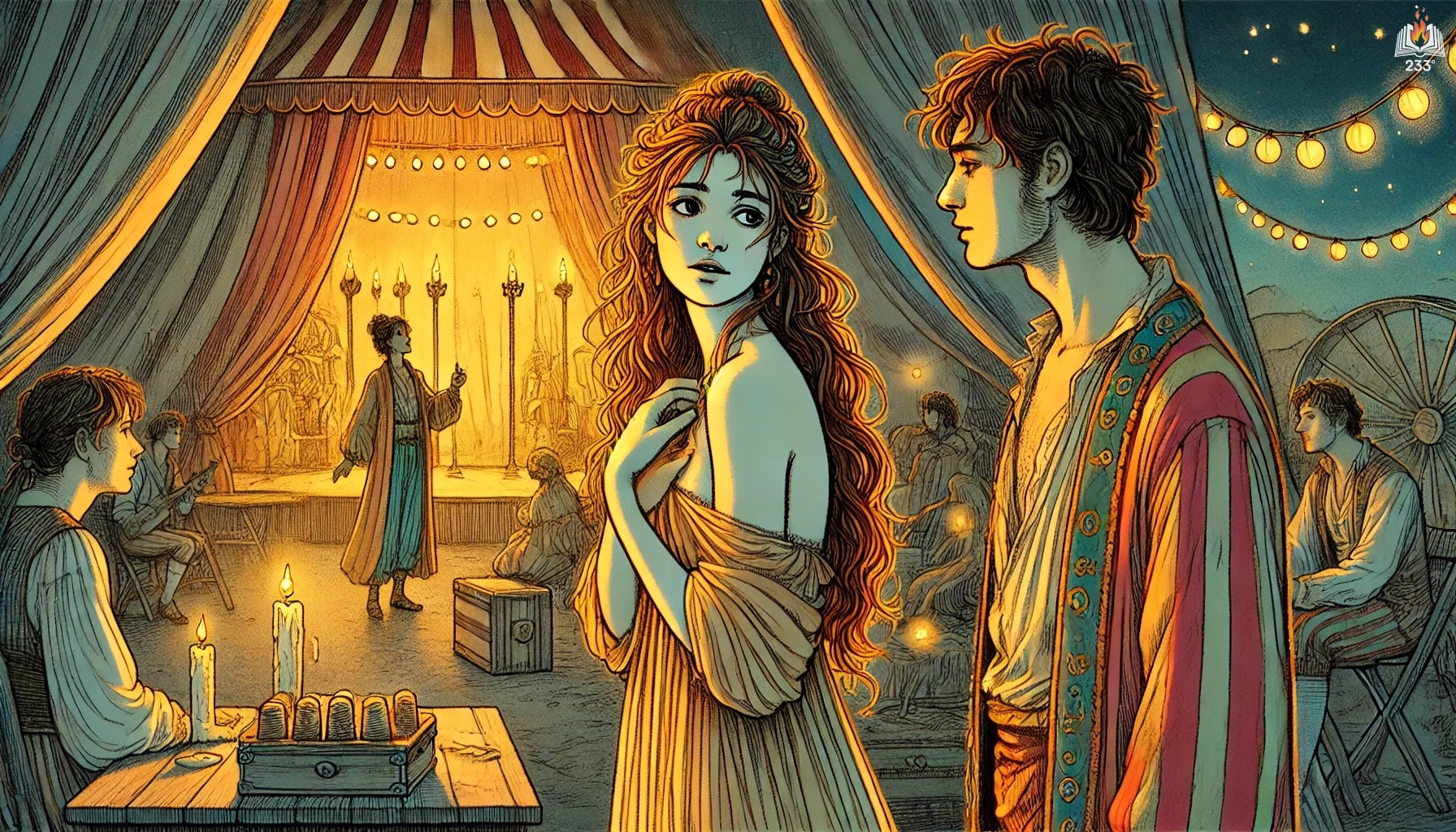The Perks of Being a Wallflower by Stephen Chbosky, published in 1999, is a poignant coming-of-age novel told through a series of letters written by a socially awkward teenager named Charlie. Set in the early 1990s, the book explores the highs and lows of adolescence, friendships, love, trauma, and self-discovery, capturing the essence of growing up with heartfelt authenticity.
Plot Summary
Charlie, a reserved and thoughtful fifteen-year-old, begins his first year of high school carrying the heavy shadows of loss and confusion. Over the summer, his close friend Michael died by suicide, leaving Charlie grappling with grief and unanswered questions. His world is quiet and lonely until he finds solace in writing anonymous letters to an unnamed confidant, pouring out his thoughts and experiences in hopes of understanding the world around him.
At school, Charlie initially struggles to fit in, observing life as a distant spectator. Things change when he meets two seniors, the lively and kind-hearted Sam and her charming stepbrother, Patrick. They invite him into their circle of friends, a group of misfits who find joy in their quirks and imperfections. For the first time, Charlie feels a sense of belonging.
Through Sam and Patrick, Charlie is introduced to a world that is exhilarating and new. They attend parties, drive through the night with music blasting, and share moments of unfiltered joy and connection. Charlie is enamored with Sam, whose warmth and beauty captivate him, but she views him as a younger brother. Despite this, her presence in his life encourages him to open up and experience emotions he had long suppressed.
Patrick, whose quick wit and humor mask deeper struggles, becomes a mentor and friend to Charlie. However, Patrick is dealing with his own pain, hiding a secret relationship with Brad, the school’s star quarterback, who is terrified of being outed. Their love is tender yet fraught with complications, as Brad is consumed by fear of rejection and violence.
Charlie’s life at home is complex. His parents are well-meaning but distant, carrying the weight of their own issues. His older brother is away at college, pursuing dreams of a football career, while his sister, an intelligent but conflicted teenager, navigates an abusive relationship. The family’s shared history includes the shadow of Aunt Helen, a beloved figure who lived with them before her tragic death. Aunt Helen’s memory is a source of both comfort and pain for Charlie, though the full depth of her influence on him remains unclear.
At school, Charlie’s English teacher, Bill, recognizes his potential and encourages him to explore his thoughts through books and writing. Bill assigns him classics like To Kill a Mockingbird and The Great Gatsby, guiding Charlie toward self-expression and critical thinking. The mentorship helps Charlie gain confidence in his abilities, though his introspective nature often keeps him on the margins of social life.
As the year progresses, the bonds between Charlie, Sam, and Patrick deepen. They create memories that feel eternal, like driving through the Fort Pitt Tunnel with music blasting and the city lights ahead, moments where Charlie feels “infinite.” Yet, cracks begin to form beneath the surface of their joy. Patrick’s relationship with Brad unravels after Brad’s father discovers them together, leading to violence and shame. Sam faces challenges of her own, as she confronts toxic relationships and prepares to leave for college.
Charlie, meanwhile, begins to experience flashbacks and disorienting episodes. His growing feelings for Sam, combined with the pressures of his environment, awaken memories of trauma that he had long buried. Aunt Helen, who had always been a figure of love and care in his life, is revealed to have harmed him in ways he struggles to articulate. The weight of this realization threatens to overwhelm him, but his friends and family provide an anchor as he begins to seek help.
When Sam prepares to leave for college, she and Charlie share an intimate moment that brings his feelings for her to the surface. It’s a bittersweet goodbye, as Charlie realizes the inevitability of change and the importance of letting go. In her absence, he confronts his past and begins to untangle the memories that have haunted him. With the support of a therapist and the knowledge that he is not alone, Charlie starts a journey of healing, learning to embrace life in all its complexity.
The story closes with a sense of quiet hope. Charlie resolves to “participate” more fully in life, drawing strength from the love and friendships that have shaped him. Though challenges remain, he is ready to face them, no longer merely a wallflower but a young man discovering his voice.
Main Characters
- Charlie: A shy, introspective 15-year-old boy who starts high school grappling with the recent suicide of his friend Michael. Charlie’s letters reveal his struggles with depression, social anxiety, and past trauma. His journey centers on finding his place in the world and forming meaningful connections.
- Sam: A compassionate and free-spirited senior who becomes one of Charlie’s closest friends. Sam is kind-hearted and wise but has her own insecurities and complicated past. She plays a significant role in helping Charlie grow emotionally.
- Patrick: Sam’s stepbrother and a confident, openly gay senior. Patrick is humorous and charismatic, yet struggles with a secret relationship and societal pressures. His bond with Charlie highlights themes of acceptance and resilience.
- Bill: Charlie’s English teacher, who encourages him to explore his potential through literature and critical thinking. Bill acts as a mentor, providing Charlie with valuable life lessons.
- Charlie’s Family: His parents, siblings, and Aunt Helen play crucial roles in shaping his experiences and understanding of relationships, love, and loss.
Theme
- Adolescence and Self-Discovery: The novel captures the confusion, exploration, and transformation of adolescence. Charlie’s journey is one of personal growth, as he navigates friendships, love, and trauma while learning to “participate” in life.
- Friendship and Belonging: The bonds Charlie forms with Sam, Patrick, and their group become his refuge, highlighting the importance of community and finding those who accept you as you are.
- Trauma and Healing: Underlying Charlie’s letters are themes of buried trauma and its impact on mental health. The novel sensitively addresses how facing the past is essential for healing.
- The Power of Literature and Music: Through books, songs, and mixtapes, Charlie finds solace and expression. Literature and music serve as symbols of connection and understanding.
- Love and Relationships: Romantic, familial, and platonic love are central to the story. The narrative explores both the beauty and complexities of human connection.
Writing Style and Tone
Stephen Chbosky’s epistolary format makes the narrative intimate, as Charlie’s letters provide a direct window into his thoughts and emotions. The writing is straightforward yet profound, blending innocence and maturity in Charlie’s voice. Chbosky’s ability to balance humor with raw emotion gives the novel a relatable and heartfelt quality.
The tone is reflective and sincere, alternating between moments of joy, heartbreak, and contemplation. Charlie’s unfiltered honesty invites readers to empathize deeply with his journey. The author’s use of vivid imagery, especially in scenes involving music and personal milestones, creates a cinematic feel that resonates long after the story ends.
We hope this summary has sparked your interest and would appreciate you following Celsius 233 on social media:
There’s a treasure trove of other fascinating book summaries waiting for you. Check out our collection of stories that inspire, thrill, and provoke thought, just like this one by checking out the Book Shelf or the Library
Remember, while our summaries capture the essence, they can never replace the full experience of reading the book. If this summary intrigued you, consider diving into the complete story – buy the book and immerse yourself in the author’s original work.
If you want to request a book summary, click here.
When Saurabh is not working/watching football/reading books/traveling, you can reach him via Twitter/X, LinkedIn, or Threads
Restart reading!








